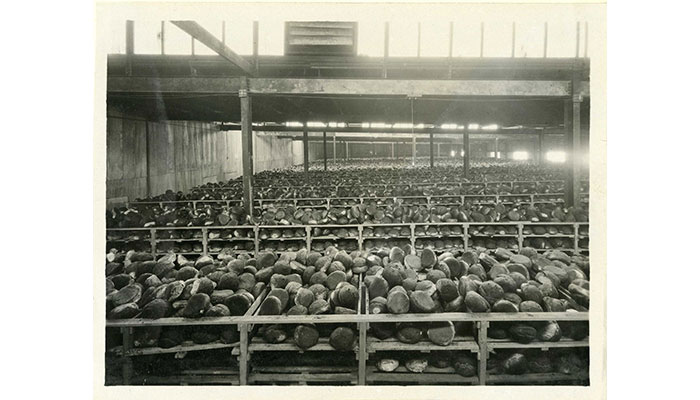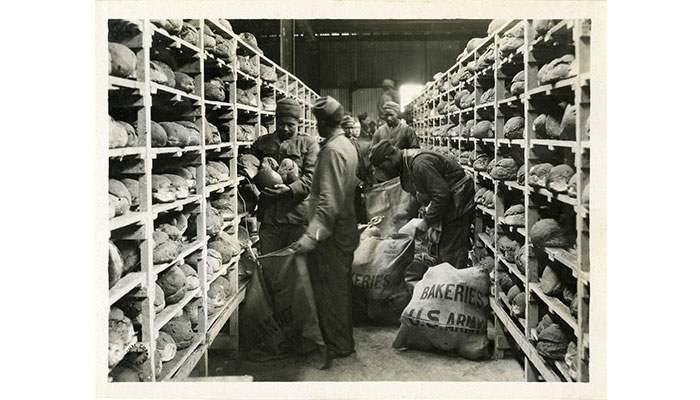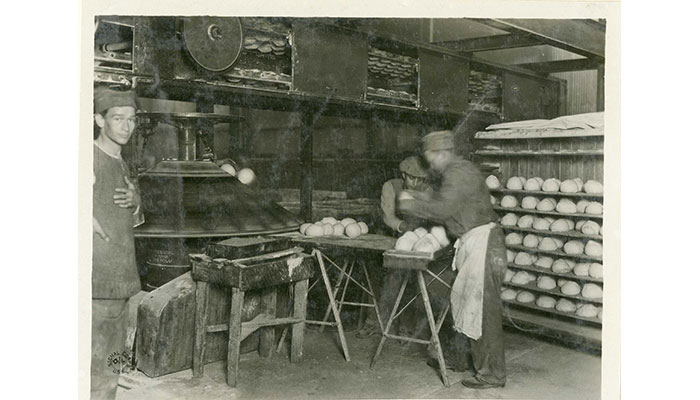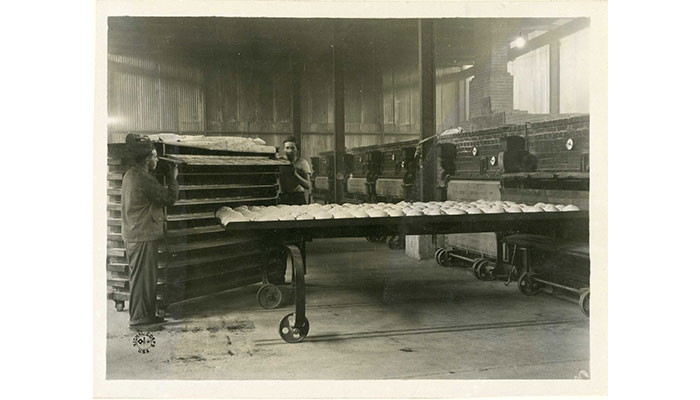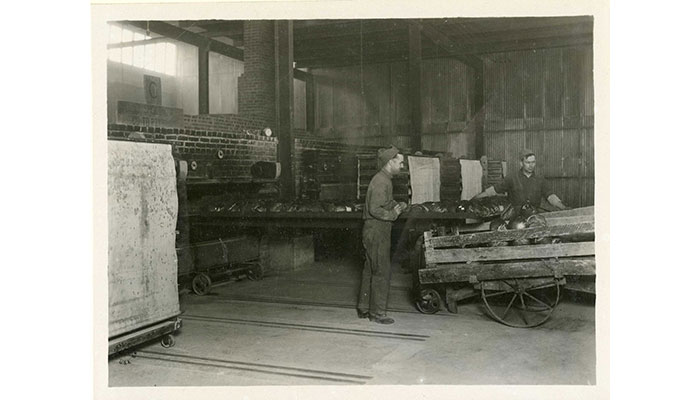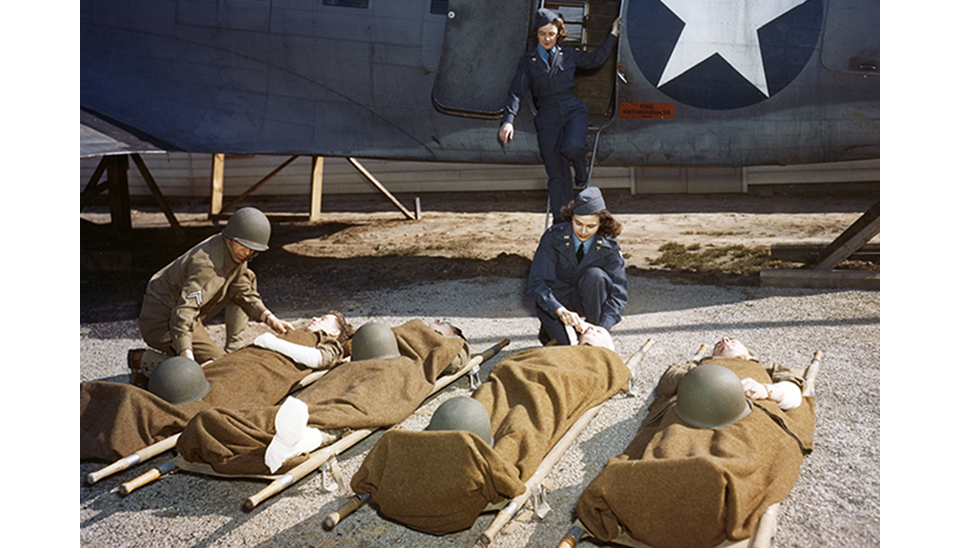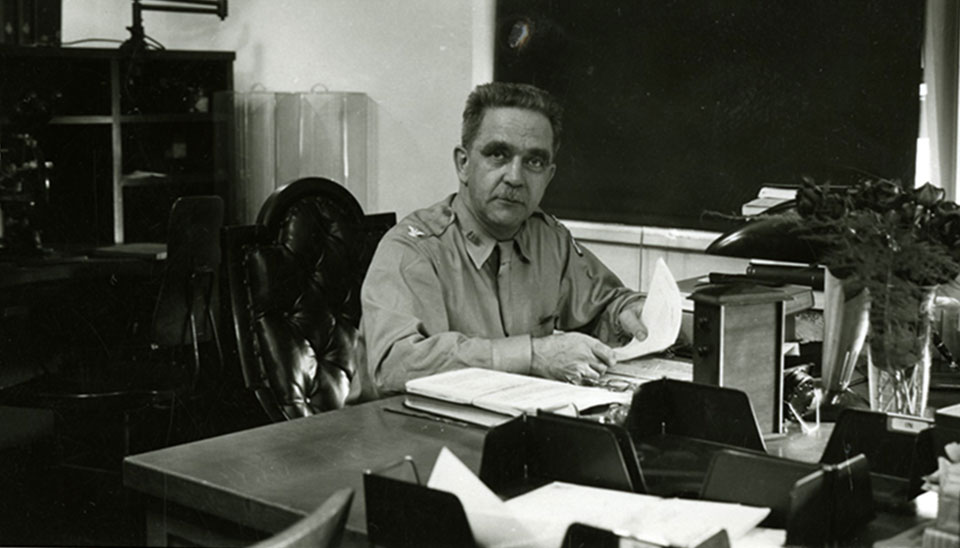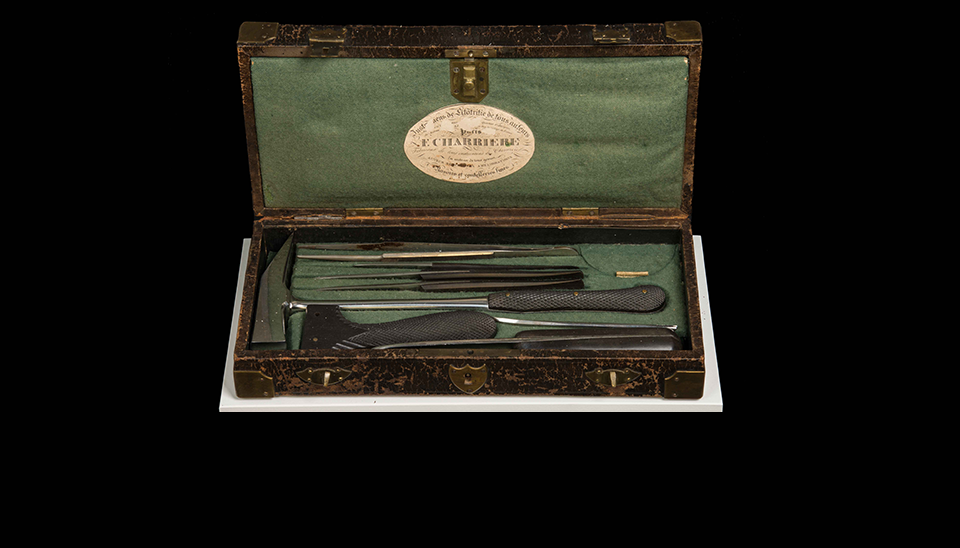As the saying goes, "Necessity is the mother of invention," and at the onset of World War I, many things became a necessity. Among them, food was the most crucial, with hungry soldiers needing nutritious meals to keep fighting. Britain, France, and Germany already established their methods of producing, transporting, storing, and distributing food to their war fighters. But in early 1917 when the U.S. just entered the war, and the military had to figure out not just how to get their soldiers and sailors to the conflict, but how to keep them well supplied.
To help, in August 1917, President Woodrow Wilson created the U.S. Food Administration. This agency was meant to be a central authority to control the production, conservation, and distribution of food. Material rationing was common during World War I in the United States, along with certain types of food products, such as wheat, beef, butter, and sugar. Americans were encouraged by the U.S. Food Administration to find replacements for these meal staples to help the war effort; use oats, buckwheat and cornmeal rather than wheat or poultry, and fish rather than beef.
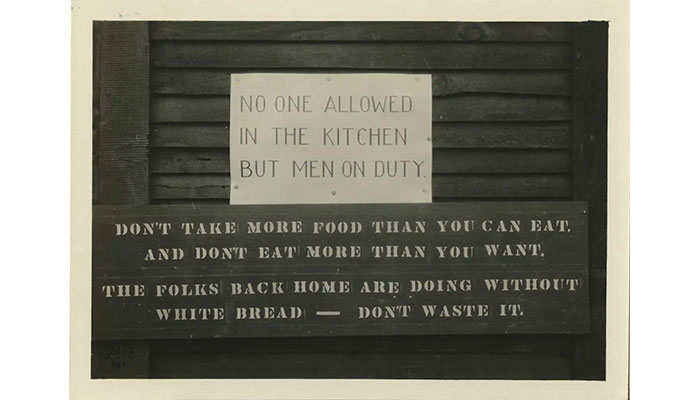
Sign in U.S. Army mess hall, "No One Allowed In The Kitchen But Men On Duty. Don't Take More Food Than You Can Eat And Don't Eat More Than You Want. The Folks Back Home Are Doing Without White Bread – Don't Waste It." World War I. (Reeve 10236)
These staples were needed to produce the food rations of U.S. war fighters. While military rations of the time were famously a point of complaint and derision by all combatants, no matter the side, the U.S. rations were considered some of the best. Soldiers were expected to eat approximately 4,600 calories a day to keep up with their activity level and the physical demands of trench warfare. They ate mutton or beef, alongside potatoes and bread to keep them full. Plum puddings or chocolate were also common, especially in emergency rations, eaten by individuals trapped behind enemy lines. Instant coffee became the staple drink for G.I.'s to such an extent that the nickname of G.I. Joe lent itself to the drink for decades after ("cup of Joe"). And by the end of the war, the U.S. government was purchasing approximately 37,000 pounds of instant coffee a day.
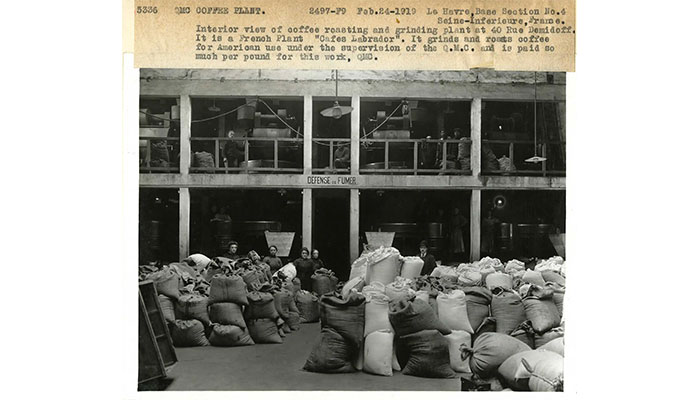
Interior view of coffee roasting and grinding of the French plant, Cafes Labrador, at 40 Rue Demidoff. This coffee was for American use under the supervision of the Quartermaster Corps, Le Havre, Base Section No. 4, Seine-Inferieure, France. Feb. 24, 1919. (Reeve 15336)
To keep these rations fresh and edible, the government shipped most perishable food in tin cans. The process of canning was around for about a century, but the demand for low-cost, high-calorie, portable, and durable meals found a dramatic increase in the kinds of food that could be canned, including ravioli and spaghetti by the Italian army and coq au vin and boeuf Bourguignon by the French.
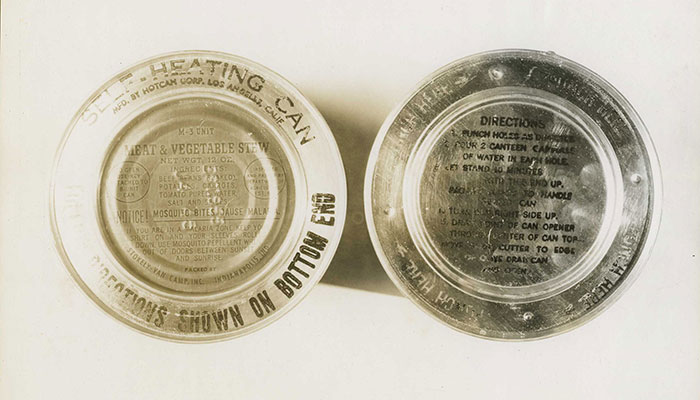
Canned meat and vegetables, M-3 Unit – Meat and Vegetable Stew. Self-heating can. Ca. World War I. (Reeve 91463)
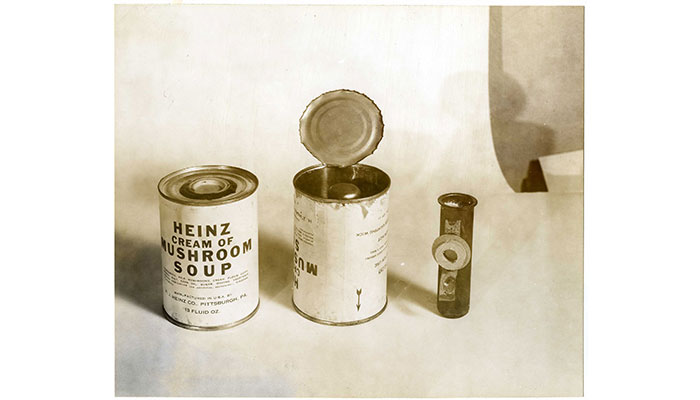
Heating system demonstration for canned food preparation. Heinz Cream of Mushroom Soup. Ca. World War I. (Reeve 91464-2)
Bread was just as important. At the time, nearly 30% of Americans' calories came from bread, thanks to the U.S.'s access to vast quantities of wheat (and therefore wheat flour). Prior to entering the war, the U.S. government provided wheat to allied forces, but in 1917 the U.S. needed to supply its own troops as well as its allies. To support this massive demand, food scientists studied and reported on the efficacy of milling and baking processes to better increase the yield and nutrition of the bread they produced.
But it did not stop at bread. Military nutritionists were vital in assessing and producing more filling but economic ways to feed U.S. troops. Not only that, but, for the first time, dieticians (alongside physical and occupational therapists) practiced in base and field hospitals. While most served domestically, several dieticians were deployed through the American Red Cross to base and field hospitals on the European front. They proved themselves almost immediately with noticeable increases in food consumption and decreases in food waste in locations where they were deployed.
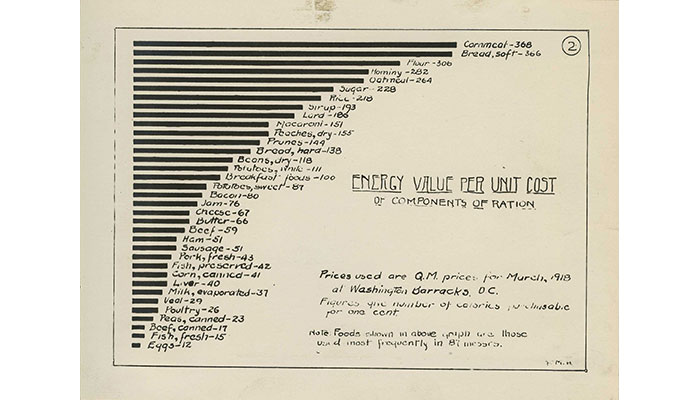
Chart of energy value of ration components: energy value per unit cost of components of ration. World War I. (Reeve 33542)
To provide more food, farmers were encouraged to innovate. Gasoline-powered tractors were not popular at the outset of World War I. However, a smaller, cheaper version of earlier designs, released by the Ford Company in 1917, saw a gradual shift away from animal-powered farm equipment to machine-powered. Because of this shift, more horses could be used by the U.S. military and less pastureland was needed on farms for animal feed. That land was turned over to the process of making grain and other produce needed to feed soldiers, sailors, and civilians.
In 1920 the Ward Baking Company stated, "The American Baking Industry found itself during the war." Baking was not alone; from bread and coffee, to farming and nutrition, World War I helped to shape the modern era of food production. As need increased, so did innovation, and many of the products and processes we consider staples of American food production owe their founding to this dynamic era. The U.S. began to take interest in how we made, packed, shipped, and ate food, and what that food was doing for our bodies. As the saying goes, "An army marches on its stomach," and during World War I, thanks to the ingenuity and effort of millions, bellies at home and overseas stayed full.
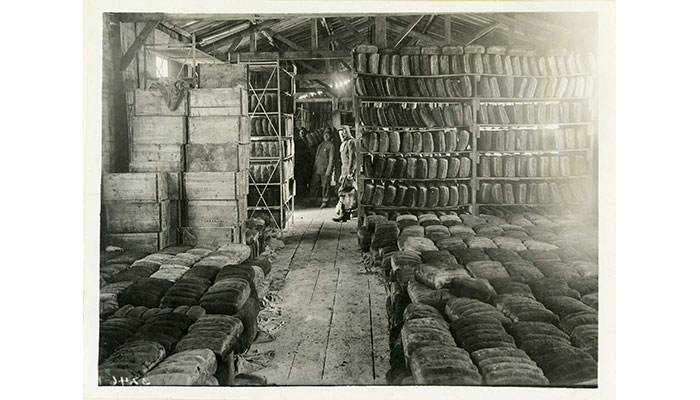
Resources
"'Food is Ammunition–Don't Waste It' Part 1: Food Rationing in WWI and WWII." City of Greeley Museums.
"Win the War in the Kitchen." The National WWI Museum and Memorial
Koehler, Jeff. "In WWI Trenches, Instant Coffee Gave Troops a Much-Needed Boost." NPR online.



